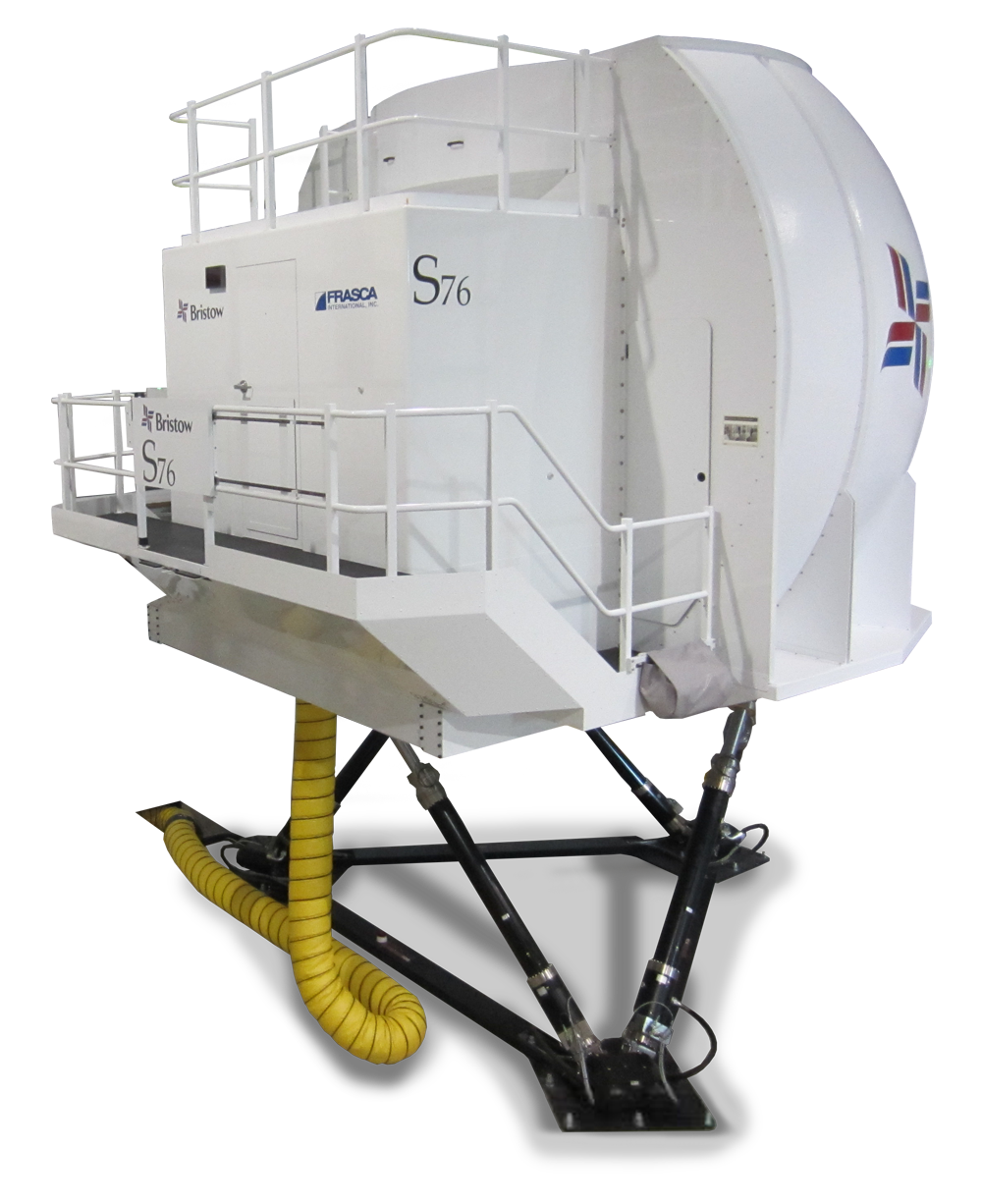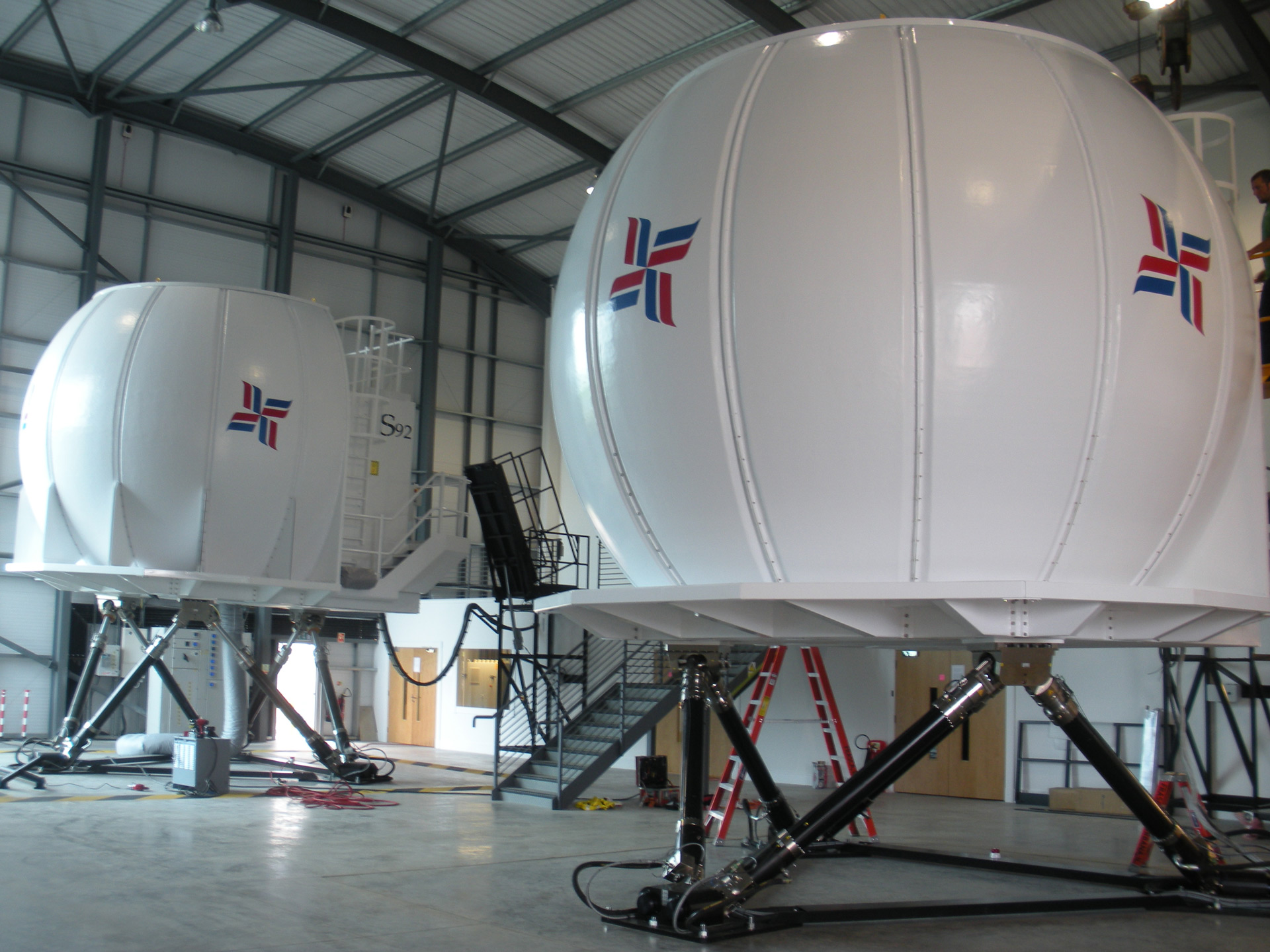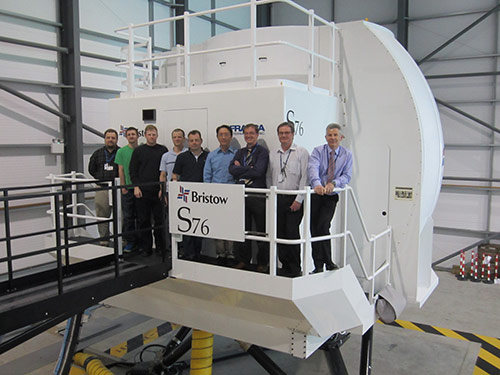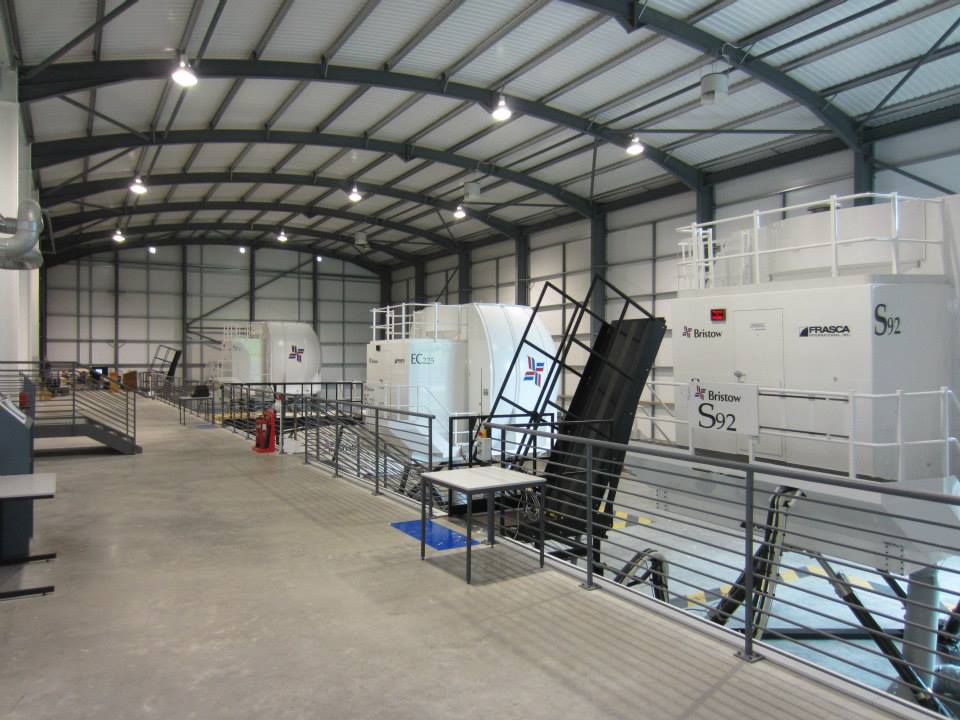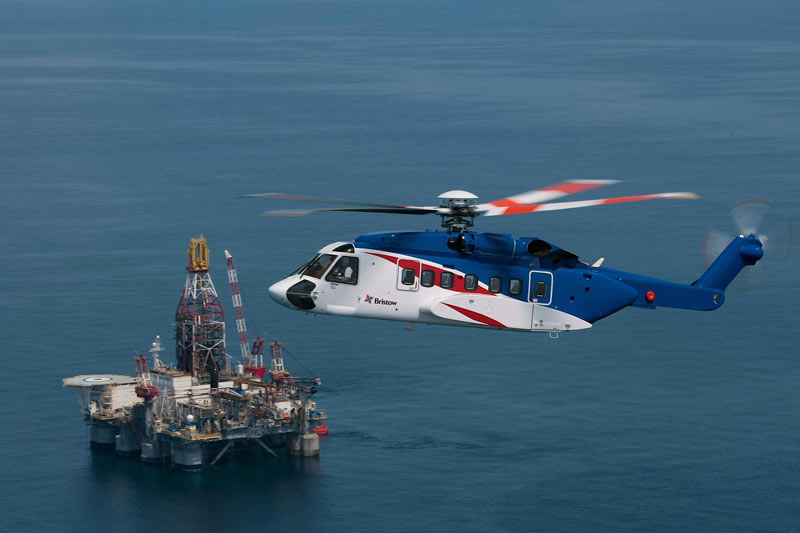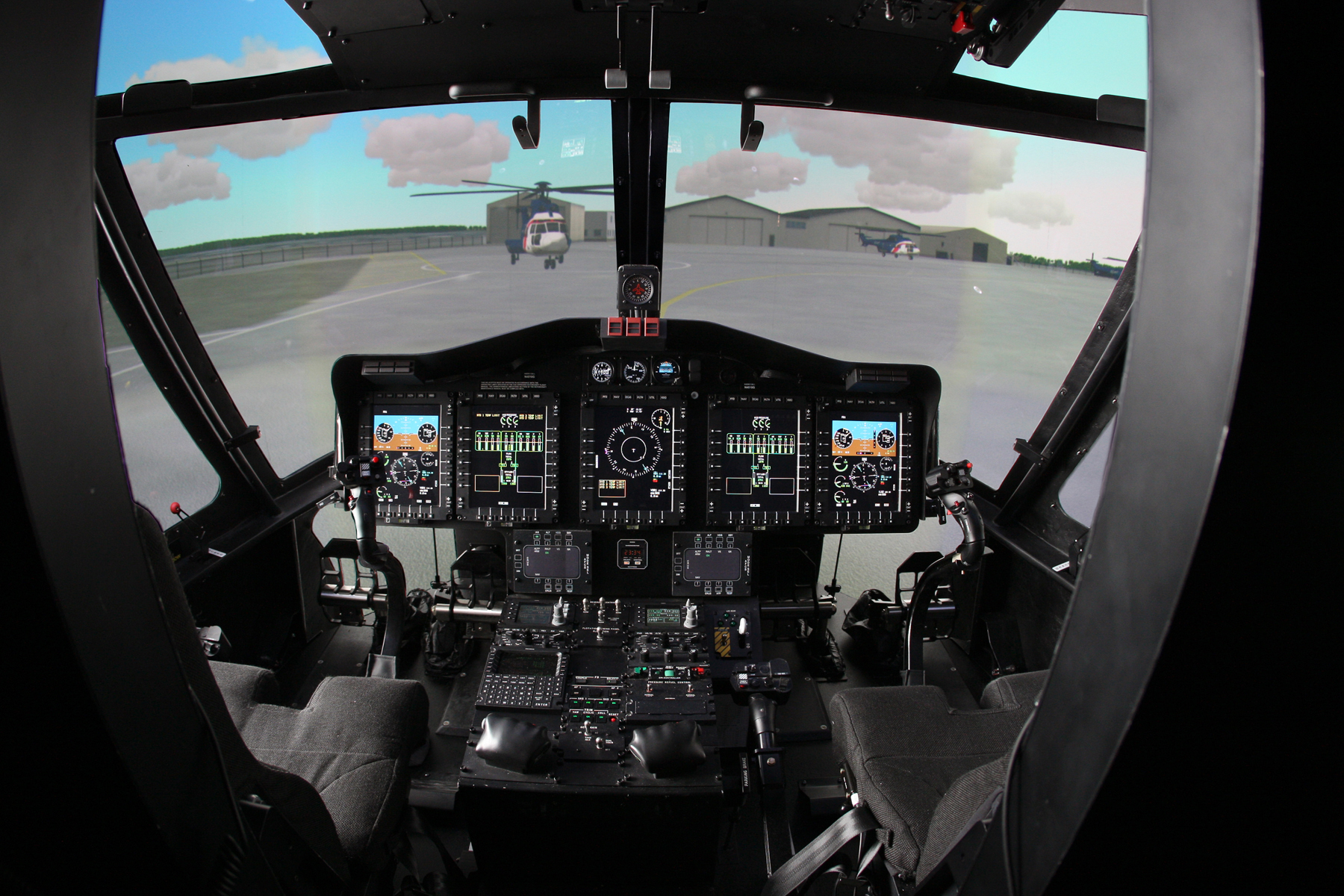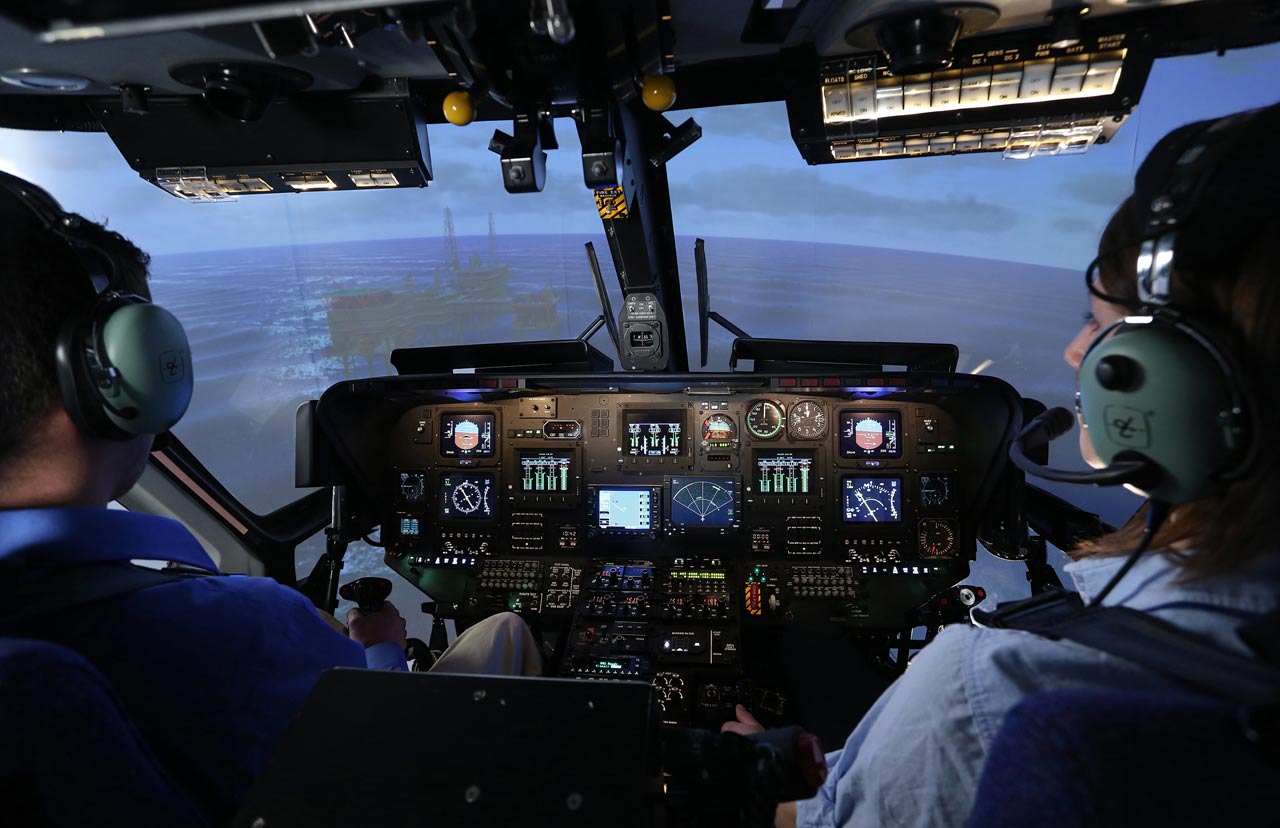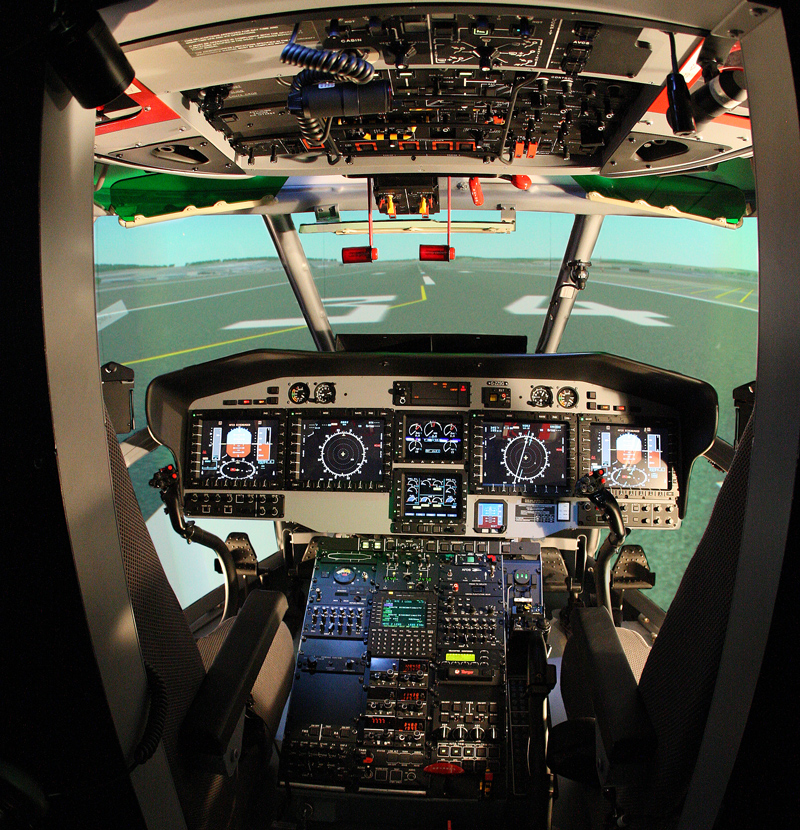Next Generation Requirements
In the mid‐2000s, the Bristow Group began operating a new generation of twin‐engine IFR helicopters to support offshore oil and gas (O&G) exploration and production – the Airbus EC225, Sikorsky S‐ 76C++, and Sikorsky S‐92. To support flight training in these new aircraft, Bristow chose Frasca to design, certify, manufacture, and install three new type‐specific state-of‐art full flight simulators for Bristow’s North Sea helicopter training center in Aberdeen, Scotland.
Bristow Mission Profile
Founded in 1955, Bristow today operates 345 aircraft supporting offshore O&G in Europe, Russia, and North, Central, and South America. Specifically, in the often unforgiving North Sea, Bristow provides O&G support in addition to 24‐hour, all‐weather day/night search and rescue (SAR) for the UK government and the Norwegian O&G industry.
Notorious for rough and changing weather conditions, the North Sea is an exceptionally challenging environment with high winds, rough seas, poor visibility, fog, thunderstorms, icing conditions, and turbulence. The company sought superior simulator technology to ensure pilots received realistic, multi‐sensory training preparing them to maintain safe flight operations no matter what the North Sea throws at them.


